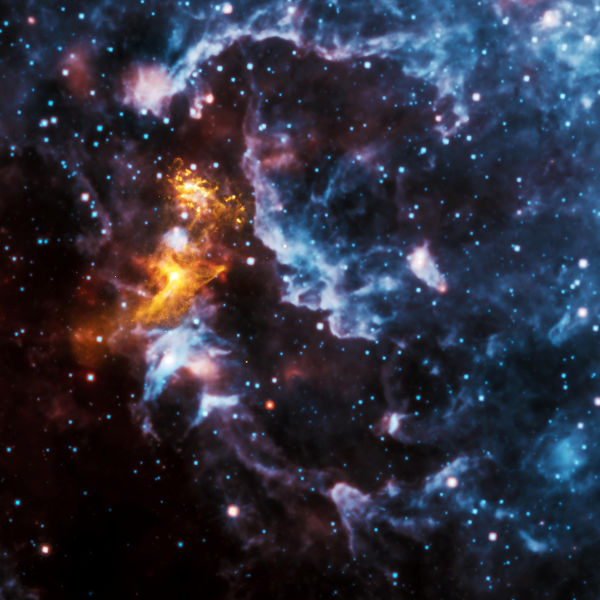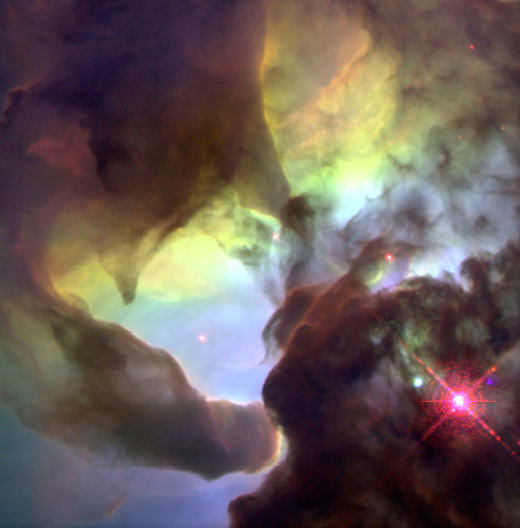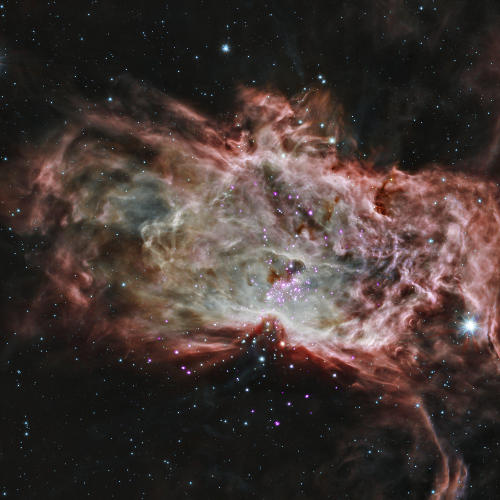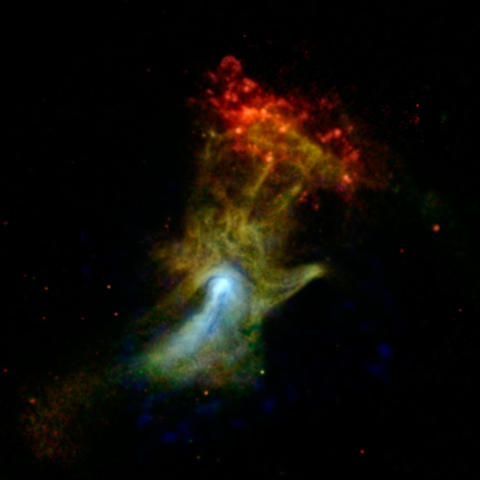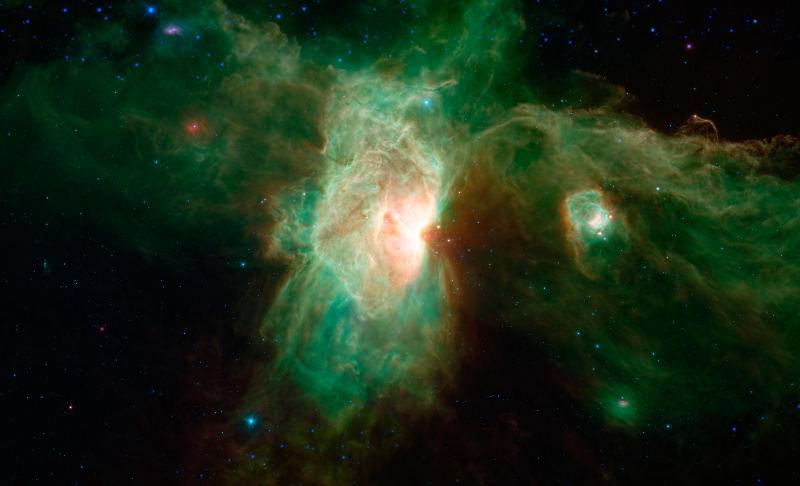
This composite picture shows the Orion Molecular Cloud Complex with the Flame nebula (NGC 2024) featured in the center of the image and the Horsehead nebula making an eerie appearance near the right hand corner. This part our vast universe is about 1,200 light-years away from Earth and most of the data in this picuture was captured by Spitzer Space Telescope’s infrared cameras. The blue and green represent “hot stars” with the blue light emitted at a wavelength of 3.6 microns and green being 8 micron light. The relatively “cooler” parts of this system are mostly dust clouds that are areas in red, measured at a 24 micron wavelength.
